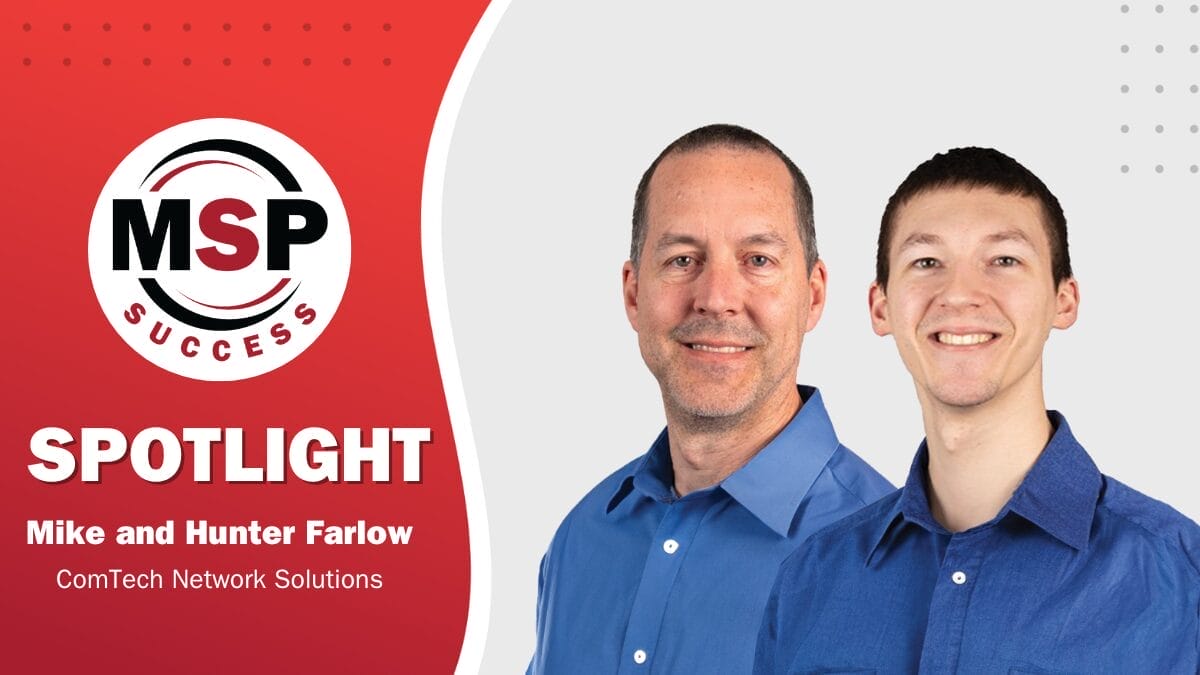Joanna Mirov had two babies in 2005: a beautiful newborn daughter and MXOtech, a software development company and MSP.
Most entrepreneurs will say their attachment to their company can rival parenthood. After all, they had to care for and nurture their company to help it grow. That attachment is one of the reasons that selling a company can prove difficult, even if it is both financially rewarding and removes day-to-day stress.
But this past September, Mirov did something she once thought she’d never do: sell her company. The decision did not come overnight, but from years of conversations and the emergence of a unique opportunity that she felt benefited herself and her 40 employees.

“It is not something that happens overnight,” she says. “I never intended to sell for the longest time. I thought I would always stay independent. As time went on, though, and I heard stories from my peers and saw opportunities come up, it made a lot of sense to sell to Ntiva.”
Mirov is far from alone. The past few years have seen an increase in M&A among MSPs. These deals range from traditional acquisitions to the more popular roll-ups, where a handful of like-minded MSP operators join forces to create what can best be described as a “Super MSP.”
With more resources and capabilities, these Super MSPs hope to supercharge growth. They can offer customers a more diverse service line, strong service-level agreements and enhanced customer service. In some cases, they can also offer lower prices or better service at existing costs.
However, becoming part of a Super MSP is not for everyone. The larger company can become sluggish and reactionary while lacking that personal connection many customers want. An operator may also find themselves with less (or, in some cases, more) responsibility than they bargained for.
“A Customer Service Company”
In October of 2021, Dan Izydorek participated with two other MSPs to roll their firms, including his firm Intelligent Technical Solutions. Since that original merger, his firm has acquired another eight firms and intends to add a handful each year as market conditions allow. He sees that those strategic acquisitions, along with continued organic growth, could power the new firm to untold heights.
His situation has shifted from that of a roll-up (where like-minded companies merge to former a large enterprise) to an acquirer (where a large company simply absorbs a smaller firm). Izydorek sees it as something else.
“We are a customer service company that happens to do IT,” he explains. “Any customer service company needs a lot of people, and combining companies can provide a different level of service than we could when on our own.”
Izydorek remembers coming out of quarterly strategy meetings with a small handful of goals for the company to meet during that period. Now, with a much larger enterprise, dozens of goals exist across all departments.
“The speed at which we can move forward now is incredible,” he says.
Izydorek says the age of MSP executives has contributed to the recent roll-up surge. Many company leaders who started their firms in the late 1990s and early 2000s, at the dawn of the industry, now find themselves at retirement age. Rolling up into another company allows them to get value for their firm and either step away completely or ease out over a few years.
The bar for acquisition has also dropped. Paul Cissel, Paul Cissel, the leading expert on M&A for Technology Marketing Toolkit and CEO of Growth Caddie, a consulting firm that helps MSPs maximize enterprise value to increase exit sale price, says companies below $5 million in revenue and $1 million in EBITDA would once get considered. Now those numbers are at $2 million and dropping toward $1 million.
The Potential Pitfalls
Brent Whitfield was one who long shied away from the roll-up frenzy. He says his company, DCG Technical Solutions, Inc., got approached by several private equity-backed companies – even getting to a letter of intent with three of them – but ultimately declined.
His advice? “Call every founder that they’ve acquired. What I’ve often found is that it was not a happy experience.”
Once the right partner emerges, finding that sweet spot of ownership and control becomes critical: figuring out short-term and long-term roles for each founder that fit the vision they have for themselves and their company.
Roll-ups also come with significant risk for those taking part. An operator may take part only to find the new venture is not what they bargained for. They may find themselves taking on varying levels of responsibility (some operators join roll-ups to ease into an exit, while others want to lead a hard-charging, growth-oriented business).
Some company leaders may also find themselves leaving longtime clients behind. Not all customers will stay with the new venture, choosing to move to a smaller vendor that can provide more hands-on service. The same can happen with employees who prefer the flexibility that working for a smaller firm provides, leading to immediate turnover.
An Often-Difficult Decision
While Mirov certainly had suitors over the years, she ultimately joined Ntiva for many reasons.
Mirov wanted to join a firm that had already acquired MSPs in her market. She interviewed other MSP operators who had joined to learn about their experiences, allowing her to understand the new company’s culture, reputation and long-term outlook. She also wanted a firm that could provide her customers with enhanced cyber solutions and that had other services better than, or at least on par with, what her firm already offered.
And perhaps most importantly, she wanted to ensure her employees saw an opportunity with the move from increased salaries, benefits and titles.
“Selling a company becomes a second job,” Mirov says. “It is easy to get caught up in the sale and remember that you still need to run your company.”
That was one of Mirov’s big takeaways from going through the process. Operators looking to sell need to ensure their company is beyond reproach, from bookkeeping and customer contracts to technology stack. Then there are the unexpected challenges, like when Mirov had to remove the first lawyer she hired early in the process.
Overall, though, the experience was positive.
“My response time for my customers was 48 minutes – now it is 48 seconds with this new company,” Mirov says. “We just have the resources to do more. We have a full suite of services. There were things I could simply not do on my own.”









